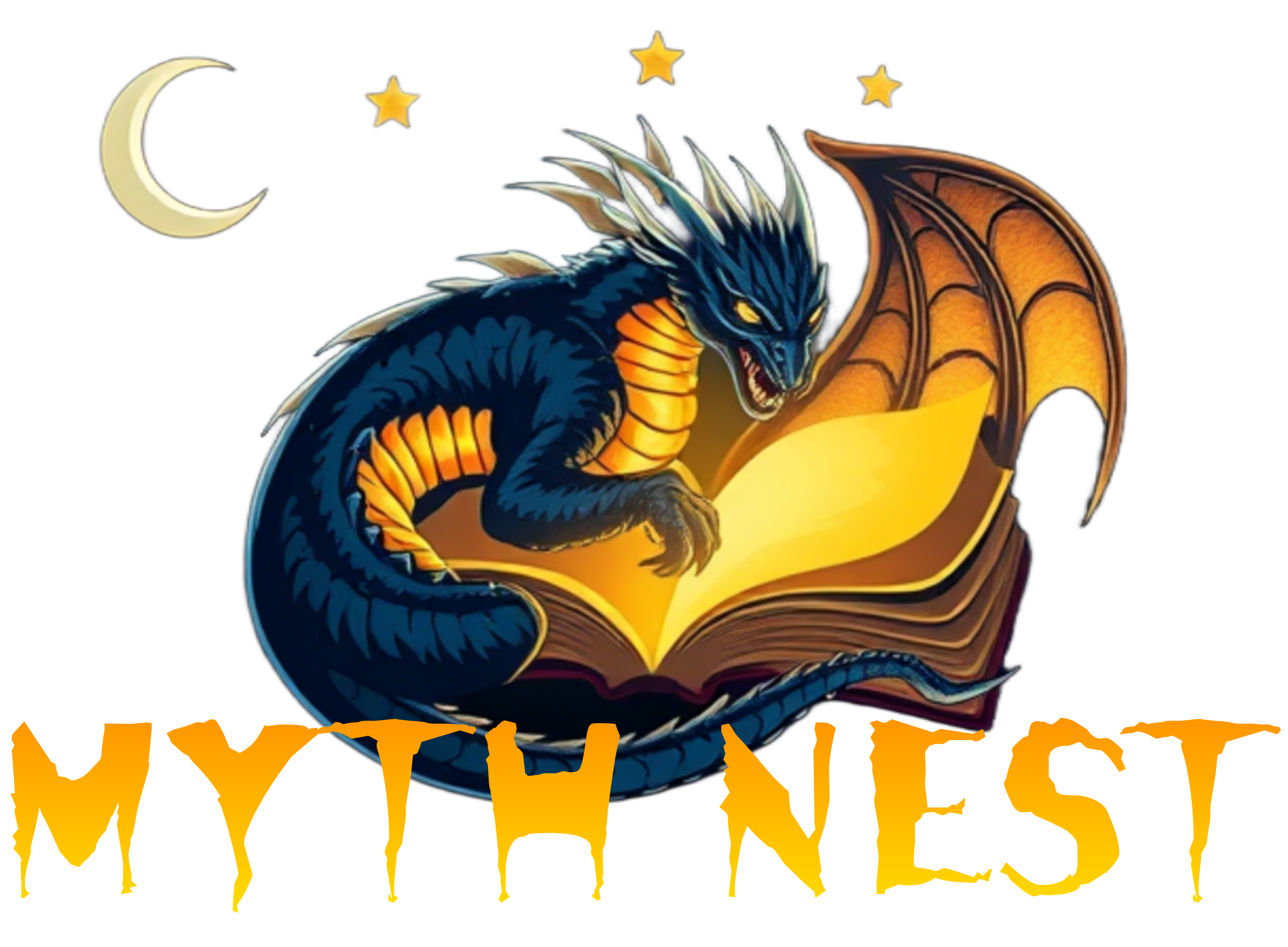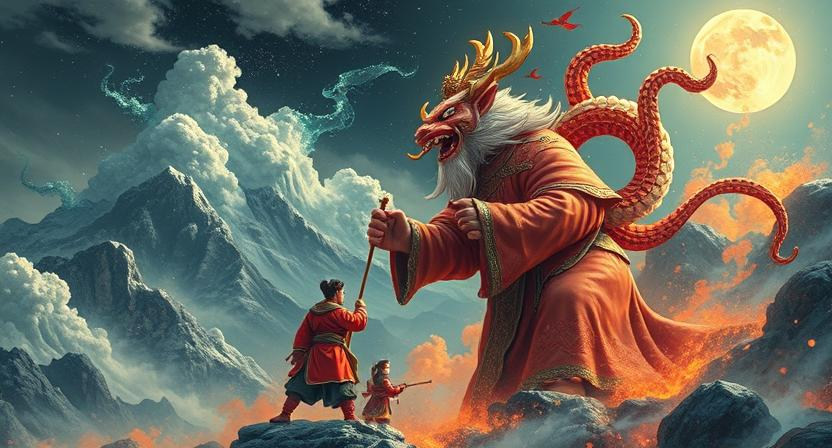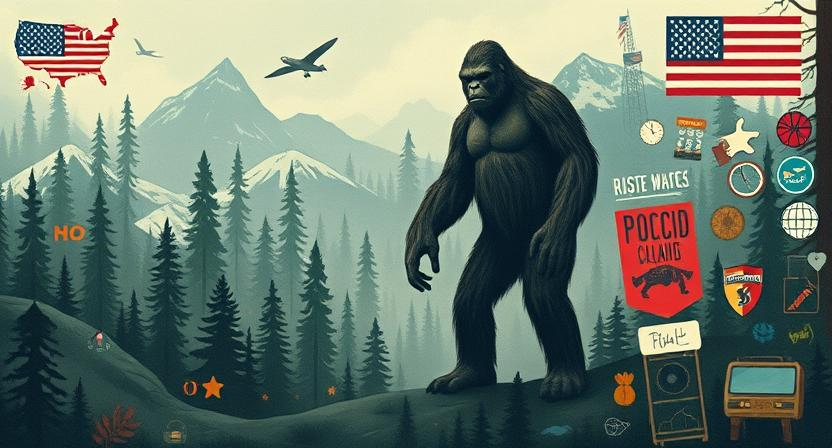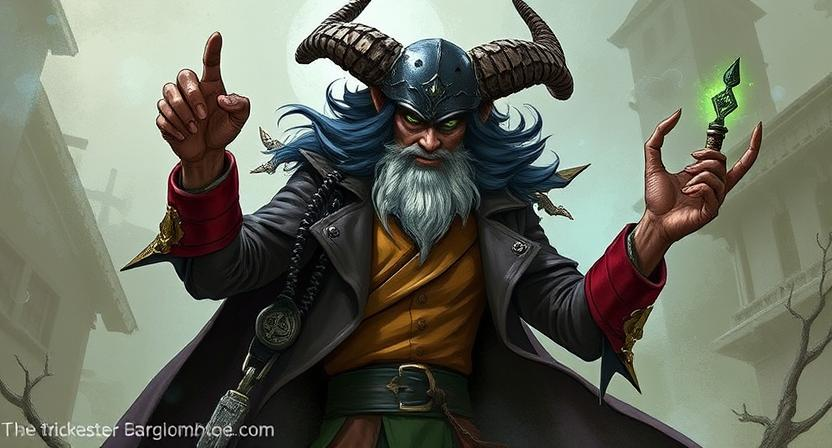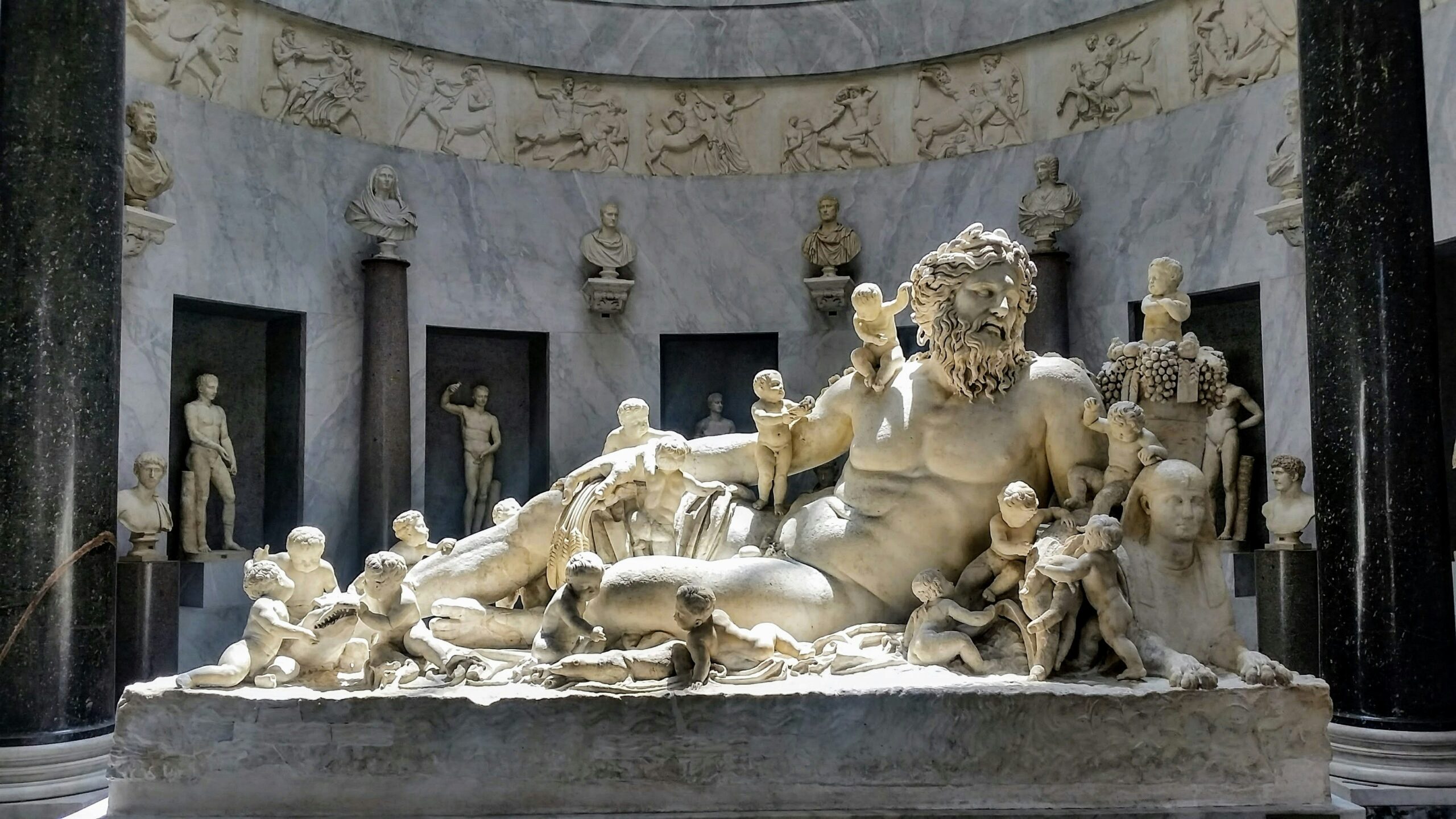Origin of Pangu

Legend has it that in the beginning, the universe was a formless void, chaotic and untamed. Out of this primordial chaos, a cosmic egg emerged, cradling the essence of creation within its shell. Within this mysterious egg, Pangu, the first being, began to form and grow in silence, encompassing the potential of the universe within himself.
As Pangu continued to grow within the confines of the cosmic egg, so too did his surroundings transform. The cosmic egg eventually cracked open, splitting into Yin and Yang, the primal forces of the universe. Pangu emerged from the shattered shell, standing tall and powerful, ready to embark on his destined journey of creation and transformation.
• Legend has it that in the beginning, the universe was a formless void, chaotic and untamed.
• Out of this primordial chaos, a cosmic egg emerged, cradling the essence of creation within its shell.
• Within this mysterious egg, Pangu, the first being, began to form and grow in silence, encompassing the potential of the universe within himself.
As Pangu continued to grow within the confines of the cosmic egg:
• His surroundings transformed along with him.
• The cosmic egg eventually cracked open, splitting into Yin and Yang.
• Pangu emerged from the shattered shell standing tall and powerful.
Pangu’s Birth
Pangu’s birth is shrouded in mystery and myth, with ancient Chinese legends recounting the tale of his unconventional origins. According to tradition, Pangu emerged from an egg that had been incubating for countless eons in the primeval chaos of the universe. As the egg cracked open, Pangu emerged in a gigantic form, dwarfing the vast expanse of nothingness that surrounded him.
Once freed from the confines of the cosmic egg, Pangu embarked upon his monumental task of creating order out of chaos. His immense stature and strength enabled him to wield his axe with unparalleled force, cleaving apart the chaos and giving birth to the fundamental aspects of the universe. In this pivotal moment of creation, Pangu set the stage for the formation of the world as we know it, establishing the very foundations upon which all existence would be built.
• Pangu emerged from an egg that had been incubating in the primeval chaos of the universe
• His gigantic form dwarfed the vast expanse of nothingness around him
• Pangu’s task was to create order out of chaos after cracking open the cosmic egg
• With his immense stature and strength, he wielded his axe to cleave apart chaos and give birth to fundamental aspects of the universe
• This pivotal moment set the stage for the formation of our world and established foundations for all existence
Pangu’s Growth
After being born in the cosmic egg, Pangu grew at an extraordinary rate, each day becoming taller and stronger. His body expanded endlessly, pushing apart the chaos that surrounded him. The world began to take shape as Pangu’s colossal form extended from the heavens to the earth, bridging the divide between the two realms. The vastness of his being filled the void, bringing order to the primordial chaos that had existed before his emergence.
As Pangu continued to grow, his physical presence influenced the transformation of the world around him. His limbs stretched out, forming the framework for the creation of the sky and the earth. With each passing moment, the boundaries of the universe expanded in tandem with Pangu’s expanding body, shaping the very fabric of reality. His growth was not only a manifestation of his strength but also a testament to his crucial role in the establishment of the cosmic order.
• Pangu’s growth symbolized the birth of the universe and the separation of yin and yang
• His colossal form brought balance to the chaotic forces that existed before creation
• The expansion of his body marked the beginning of time and space as we know it
• Pangu’s physical transformation laid the foundation for all life on earth
The Chaos Before Creation
In the vast emptiness before creation, there existed a formless chaos in which elements of the universe were in a state of disorder and conflict. This chaotic state was characterized by a swirling mass of energy where there was no distinction between light and darkness, order and chaos. The primordial forces of Yin and Yang were in constant flux, seeking equilibrium but unable to find balance in the tumultuous sea of existence.
Amidst this swirling chaos, Pangu emerged as a powerful being, a giant of immense strength and wisdom. With his colossal body stretching between the heavens and the earth, Pangu set out to bring order to the chaos and bring forth a new world filled with light and life. His task was monumental, his purpose divine, destined to shape the universe and establish the foundations of existence itself.
• As Pangu began his monumental task, he wielded a mighty axe to separate Yin from Yang, creating the heavens above and the earth below.
• With each swing of his axe, Pangu brought forth new elements of creation – mountains and rivers, oceans and skies.
• The chaos that once reigned supreme slowly gave way to order and harmony as Pangu continued his divine work.
• After countless eons of labor, Pangu finally laid down to rest in the center of the world he had created, becoming one with the land itself.
Pangu’s Role in Creating the World
Pangu’s role in creating the world is foundational to Chinese mythology. Legend has it that before the existence of the world as we know it, there was chaos. Pangu emerged from this chaos as a giant who took it upon himself to bring order and stability to the universe. With immense strength and determination, Pangu set out to separate the elements that created the world.
As Pangu grew in stature, so did the world around him. From his colossal form, he gradually shaped the heavens above and the earth below, creating a space where life could thrive. Through his tireless efforts, he established the fundamental structure of the world, laying the groundwork for the existence of all living beings.
• Pangu emerged from chaos as a giant
• He brought order and stability to the universe
• Separated elements to create the world
• Grew in stature as he shaped heavens and earth
• Established fundamental structure for all living beings
Pangu’s Fight Against Chaos

Pangu stood tall amidst the swirling chaos, his mighty form radiating power and determination. The forces of disorder and destruction assailed him relentlessly, seeking to crush his resolve. Yet, Pangu stood firm, his heart filled with unwavering courage and a fierce determination to bring order to the tumultuous void.
With each strike, Pangu pushed back against the chaos, wielding his extraordinary strength and will to carve out a space of tranquility amidst the chaos. Sparks flew as he battled against the primal forces of darkness, his every breath a testament to his indomitable spirit. In the face of overwhelming adversity, Pangu remained resolute, knowing that only through his sacrifice and valor could the world be born anew.
• Pangu’s towering figure exuded power and determination in the midst of chaos
• Forces of disorder and destruction relentlessly attacked him, trying to break his resolve
• Pangu stood firm, filled with courage and a fierce determination to bring order to the void
• With each strike, he pushed back against chaos using his strength and willpower
• Sparks flew as he battled primal forces of darkness, showing his indomitable spirit
• Despite overwhelming adversity, Pangu remained resolute in his mission for a new world
Pangu’s Sacrifice
Pangu’s sacrifice marked a pivotal moment in the mythological narrative of the creation of the world. According to ancient Chinese folklore, after growing for aeons and pushing apart the yin and yang energies to create the sky and earth, Pangu sensed his life force waning. He realized that to sustain the newly fashioned world, he would have to make the ultimate sacrifice. With great determination, he decided to give up his own life for the greater good of all beings.
In a selfless act of heroism, Pangu lay down and allowed his body to transform into the universe itself. His breath became the wind, his voice the thunder, and his eyes the sun and moon. The rivers and oceans flowed from his blood, while the mountains and valleys arose from his flesh and bones. Pangu’s sacrifice symbolized the eternal cycle of life, death, and rebirth, illustrating the interconnectedness of all things in the cosmos.
• Pangu’s sacrifice was a selfless act of heroism
• His body transformed into the universe itself
• His breath became the wind, voice the thunder, and eyes the sun and moon
• Rivers and oceans flowed from his blood, mountains and valleys arose from his flesh and bones
• Symbolized the eternal cycle of life, death, and rebirth
Creation of the Sky
In the ancient Chinese myth of Pangu, the creation of the sky is a pivotal moment in the formation of the world. As the giant Pangu grows stronger, the chaos of the universe begins to take shape. With a mighty swing of his axe, Pangu separates the chaos, causing the clear sky to form above and the dense earth below. This act symbolizes the division between the heavens and the earth, establishing order in the realm of existence.
The creation of the sky by Pangu signifies a fundamental shift from disorder to structure in the cosmos. As the sky stretches above the earth, it becomes a vast expanse that shelters and connects all living beings. In Chinese culture, the sky is often associated with the heavens and the divine realm, signifying purity, transcendence, and harmony. Pangu’s creation of the sky embodies the power of creation and the importance of balance in the universe.
• The ancient Chinese myth of Pangu depicts the creation of the sky as a key moment in shaping the world.
• Pangu’s act of separating chaos with his axe results in the formation of the clear sky above and dense earth below.
• This division between heaven and earth establishes order and structure in existence.
• The creation of the sky by Pangu represents a shift from disorder to organization in the cosmos.
• The sky, in Chinese culture, is associated with purity, transcendence, and harmony, connecting all living beings.
Creation of the Earth
Once Pangu succeeded in separating the Yin and Yang, the heavy and impure Yin sank downwards, forming the Earth, while the light and pure Yang rose, creating the Sky. As the Earth solidified beneath Pangu’s feet, it expanded to support the vastness of creation. Mountains arose from the rocky core, valleys meandered between the peaks, and rivers carved their paths through the newly formed lands.
The Earth, as a cornerstone of Pangu’s creation, provided stability and substance for the evolving world. With its diverse landscapes and rich resources, it became the cradle of life where various beings could thrive. Pangu’s careful craftsmanship ensured that every element of the Earth was meticulously designed to serve a purpose in the grand tapestry of existence.
• The heavy Yin sank downwards, forming the Earth
• The light Yang rose, creating the Sky
• Mountains arose from the rocky core
• Valleys meandered between the peaks
• Rivers carved their paths through the newly formed lands
The Earth, as a cornerstone of Pangu’s creation, provided stability and substance for the evolving world. With its diverse landscapes and rich resources, it became the cradle of life where various beings could thrive. Pangu’s careful craftsmanship ensured that every element of the Earth was meticulously designed to serve a purpose in the grand tapestry of existence.
Separation of Yin and Yang
Yin and Yang, the fundamental concepts in Chinese philosophy representing the dualistic nature of the universe, play a significant role in the myth of Pangu. According to the legend, after Pangu’s sacrifice, his body transformed into various elements of the world. As his breath morphed into the winds and clouds, Yin and Yang emerged from his eyes, symbolizing the balance of light and darkness, feminine and masculine, and other opposing forces.
The separation of Yin and Yang marked a pivotal moment in the creation of the world, signifying the harmonious coexistence of contrasting elements. This cosmic balance is believed to be essential for the existence and continuation of life, emphasizing the interconnectedness and interdependence of all things in the universe. In Chinese culture, the concept of Yin and Yang remains a cornerstone of understanding the natural order and guiding principles for achieving harmony and balance in various aspects of life.
• The concept of Yin and Yang represents the duality and interconnectedness of opposing forces in the universe
• In Chinese philosophy, Yin symbolizes darkness, passivity, and femininity while Yang represents light, activity, and masculinity
• The balance between Yin and Yang is essential for maintaining harmony and equilibrium in nature and human life
• Practicing Tai Chi or Qi Gong are ways to cultivate the balance of Yin and Yang energies within the body
• Traditional Chinese medicine also emphasizes restoring the balance of Yin and Yang to promote health and well-being
Formation of the Four Seas

The formation of the Four Seas marks a pivotal moment in the myth of Pangu, symbolizing the completion of the cosmic order. According to Chinese folklore, as Pangu’s body transformed, his breath became the winds and clouds, his voice thundered across the sky, and his tears formed the vast waters that would come to be known as the Four Seas. These seas were named the East Sea, the West Sea, the South Sea, and the North Sea, each granted its own distinct characteristics and guardians.
The significance of the Four Seas lies in their role as boundaries that separate and define the known world, representing the harmony and balance that Pangu brought to the chaotic universe. It is believed that these seas are not only physical bodies of water but also hold spiritual and mystical significance, influencing the tides of fortune and the flow of life itself. In Chinese culture, the concept of the Four Seas continues to hold deep-rooted symbolism, embodying the interconnectedness of all existence and the enduring legacy of Pangu’s cosmic deeds.
• The East Sea, also known as the Eastern Sea or Donghai, is associated with sunrise and new beginnings.
• The West Sea, also known as the Western Sea or Xihai, is connected to sunset and endings.
• The South Sea, also known as the Southern Sea or Nanhai, represents growth and abundance.
• The North Sea, also known as the Northern Sea or Beihai, symbolizes wisdom and knowledge.
The Four Seas are not only physical bodies of water but are believed to be inhabited by mythical creatures that serve as protectors of their respective domains. Dragons are said to guard the East Sea, while tortoises watch over the North Sea. Phoenixes are believed to reside in the South Sea, while tigers protect the West Sea. These guardians play a crucial role in maintaining balance within each sea and ensuring harmony throughout all four realms.
In traditional Chinese cosmology, each of the Four Seas is associated with one of the cardinal directions – east, west, south,and north – representing different aspects of life and nature. This symbolic connection highlights the interconnectedness of all things in existence and reflects a deep reverence for nature’s power and influence on human destiny.
The concept of Pangu’s creation of the Four Seas continues to inspire artists,musicians,writers,and thinkers across Chinaand beyond.The enduring legacyof this myth servesas a reminderofthe importanceofbalance,harmony,and unityin boththe natural worldandhuman society.Itis throughunderstandingthedeep symbolismoftheFour Seasthatwe canappreciatethe richculturalheritageandphilosophicaltraditionsofChinaanditspeople.
Emergence of Mountains and Valleys
As Pangu continued to grow and exert his strength in the universe, the land beneath him began to shift and transform. With each step he took, the earth cracked open, giving rise to towering mountains and deep valleys. The mountains soared towards the sky, their peaks touching the heavens, while the valleys stretched far and wide, carving intricate patterns across the landscape.
The emergence of mountains and valleys marked a pivotal moment in the creation of the world, shaping the terrain and providing diverse habitats for the myriad of creatures that would soon inhabit the earth. Pangu’s power was evident in the grandeur of the mountains and the mystery of the valleys, showcasing the raw beauty of nature’s sculpted landscapes.从海到山从山到海,生生不息,延绵不绝。
• The mountains rose towards the sky, creating majestic peaks
• The valleys stretched far and wide, forming intricate patterns across the landscape
• Pangu’s strength was evident in the grandeur of the mountains and mystery of the valleys
• The emergence of mountains and valleys shaped the terrain, providing diverse habitats for creatures
Creation of the Sun and Moon
The creation of the Sun and Moon is a pivotal moment in the myth of Pangu, symbolizing the final stages of the world’s formation. After Pangu’s sacrifice and the separation of Yin and Yang, the Sun and Moon were brought into existence, casting light and darkness upon the newly formed Earth. The Sun, representing warmth, vitality, and growth, began its journey across the sky, providing light for all living beings. Conversely, the Moon, with its tranquil glow, brought a sense of calm and reflection to the night sky, guiding travelers and illuminating the darkness.
The Sun and Moon’s creation not only marked the completion of the world but also showcased the harmonious balance between light and dark, yin and yang. Their presence in the celestial realm mirrored the duality and interconnectedness of all existence, emphasizing the cyclical nature of life and the universe. As celestial bodies that governed the passage of time and seasons, the Sun and Moon held immense significance in ancient Chinese culture, shaping rituals, calendars, and agricultural practices. Their creation by Pangu further reinforced the divine origin of the natural world and the interconnectedness of all living things.
• The creation of the Sun and Moon in the myth of Pangu symbolizes the final stages of world formation
• The Sun represents warmth, vitality, and growth while the Moon brings a sense of calm and reflection
• The balance between light and dark, yin and yang is showcased through the creation of the Sun and Moon
• Their presence in the celestial realm mirrors the duality and interconnectedness of all existence
• The Sun and Moon held immense significance in ancient Chinese culture, shaping rituals, calendars, and agricultural practices
Creation of Humans
As the myths and legends surrounding Pangu’s creation story continue to unfold, the emergence of humans plays a pivotal role in the narrative. According to ancient Chinese folklore, after Pangu’s sacrifice and the formation of the world, humans were brought into existence. They were said to be crafted from the fleas on Pangu’s body and were bestowed with the responsibility of inhabiting the newly formed Earth.
These first humans were believed to possess great powers and wisdom, with a deep connection to the natural world. In this way, the creation of humans symbolized the pinnacle of Pangu’s work, as they were entrusted with the task of maintaining harmony and balance in the world. Through their actions and interactions, humans were seen as the embodiment of Pangu’s legacy, carrying on his spirit and teachings for generations to come.
• The emergence of humans in Pangu’s creation story signifies a crucial turning point in the narrative
• According to ancient Chinese folklore, humans were created from the fleas on Pangu’s body
• The first humans were believed to have great powers and wisdom, with a strong connection to nature
• Humans were entrusted with the responsibility of maintaining harmony and balance in the newly formed Earth
Pangu’s Legacy
Pangu’s legacy has endured through the ages, leaving an indelible mark on Chinese culture and mythology. His story of sacrifice and creation continues to be passed down from generation to generation, serving as a foundational narrative that shapes the beliefs and values of the Chinese people.
Through the legacy of Pangu, concepts of balance, harmony, and the cyclical nature of the universe are celebrated and revered. As a symbol of creation and order emerging from chaos, Pangu’s tale serves as a reminder of the importance of balance in all aspects of life and the universe.
• Pangu’s legacy emphasizes the significance of sacrifice and hard work in achieving greatness
• The story of Pangu highlights the interconnectedness of all things in the universe
• Chinese culture continues to honor Pangu through various rituals and ceremonies
• Pangu’s legacy serves as a source of inspiration for creativity and innovation in Chinese society
Evolution of Pangu’s Myth

The evolution of Pangu’s myth has undergone various transformations over centuries, adapting to different historical contexts and cultural influences. From its origins in ancient Chinese folklore to its integration into philosophical and religious beliefs, the story of Pangu has evolved alongside the changing dynamics of Chinese society. Through oral tradition, written records, and artistic representations, the legend of Pangu has been reimagined and reinterpreted by each generation, adding layers of complexity and nuance to the narrative.
As Chinese civilization expanded and interacted with neighboring cultures, elements from other creation myths and belief systems were incorporated into the evolving narrative of Pangu. This amalgamation of diverse influences enriched the myth of Pangu, highlighting its universality and resonance across different cultures. The continual reinterpretation of Pangu’s story reflects the enduring relevance and adaptability of this ancient myth, illustrating how it continues to captivate and inspire people worldwide.
• The evolution of Pangu’s myth reflects changes in Chinese society over time
• Elements from other creation myths and belief systems have been incorporated into the narrative
• Oral tradition, written records, and artistic representations have shaped the story of Pangu
• The enduring relevance and adaptability of Pangu’s myth highlight its universal appeal across cultures
Interpretations of Pangu’s Story
Pangu’s story has been subject to various interpretations throughout the ages, with scholars and researchers offering differing perspectives on its deeper meaning. One common interpretation suggests that Pangu symbolizes the forces of creation and destruction, illustrating the cyclical nature of existence. In this view, Pangu’s act of separating Yin and Yang represents the cosmic balance between opposing forces, essential for harmony and equilibrium in the universe.
Another interpretation posits that Pangu’s story serves as a metaphor for the origin and evolution of the natural world, with Pangu embodying the transformative processes that shape the earth and all living beings. This perspective highlights how Pangu’s sacrifice and subsequent creation of the world symbolize the continuous cycle of birth, death, and rebirth that governs the cycles of life on both a cosmic and personal level. These interpretations underscore the enduring relevance and richness of Pangu’s myth in understanding the complexities of existence.
• Pangu symbolizes the forces of creation and destruction
• Illustrates the cyclical nature of existence
• Represents cosmic balance between opposing forces for harmony
• Pangu’s story as a metaphor for origin and evolution of natural world
• Embodies transformative processes shaping earth and living beings
• Symbolizes continuous cycle of birth, death, and rebirth on cosmic and personal level
Cultural Significance of Pangu
Pangu holds a significant place in Chinese culture as a revered figure with a mythological origin story that symbolizes the creation and organization of the world. The tale of Pangu’s heroic feats resonates deeply with Chinese traditions and beliefs, showcasing human virtues such as perseverance, sacrifice, and the ability to overcome immense challenges.
Moreover, the enduring legacy of Pangu continues to influence various aspects of Chinese society, from art and literature to philosophical and spiritual thought. By embodying the fundamental principles of balance, harmony, and transformation, Pangu serves as a powerful cultural symbol that reflects the interconnectedness between humanity and the natural world.
• Pangu represents the values of perseverance and sacrifice in Chinese culture
• The myth of Pangu highlights the importance of overcoming challenges and obstacles
• Pangu’s story inspires artistic expressions, literary works, and philosophical discussions in Chinese society
• The concept of balance, harmony, and transformation embodied by Pangu is reflected in various aspects of Chinese life
• Pangu symbolizes the interconnectedness between humanity and nature in Chinese beliefs
Similarities with Other Creation Myths
Pangu’s story shares striking similarities with other creation myths from around the world. Many cultures have tales of a primordial being who existed before the creation of the world, often depicted as a giant or divine figure. These beings are usually credited with shaping the earth and heavens, bringing order out of chaos. Similarly, Pangu is portrayed as a colossal figure who played a crucial role in the formation of the universe, emphasizing the theme of creation from a single entity.
Furthermore, the motif of sacrifice and self-division is a common thread in various creation myths, including the story of Pangu. Sacrifice is often seen as a necessary act to bring about the birth of the world, reflecting the idea of transformation and renewal. Pangu’s sacrifice of his own body to create the different elements of the world echoes the concept of selflessness and divine intervention found in many other ancient myths. This parallel underscores the universal themes of sacrifice and rebirth that resonate across different cultures and belief systems.
• Many cultures have tales of a primordial being who existed before the creation of the world
• These beings are often depicted as giants or divine figures who shape the earth and heavens
• Pangu, like these beings, is portrayed as a colossal figure involved in the formation of the universe
• The theme of creation from a single entity is emphasized in Pangu’s story
• Sacrifice and self-division are common motifs in various creation myths
• Sacrifice is often viewed as necessary for bringing about the birth of the world
• Pangu’s sacrifice of his own body to create different elements mirrors this concept
• The idea of selflessness and divine intervention found in many ancient myths is reflected in Pangu’s story
Pangu in Modern Chinese Culture
Pangu’s myth continues to hold a significant place in modern Chinese culture, serving as a powerful symbol of creation, perseverance, and sacrifice. In contemporary society, the story of Pangu is often referenced in art, literature, and popular culture as a representation of the harmony between humanity and nature. The tale of Pangu’s sacrifice and the subsequent creation of the world resonates with the Chinese value of hard work and the belief in the interconnectedness of all things.
Moreover, Pangu’s story is frequently used to convey moral lessons and inspire individuals to overcome challenges with fortitude and determination. In a fast-paced and ever-changing world, the enduring myth of Pangu serves as a reminder of the importance of balance, resilience, and unity. As China continues to evolve and embrace modernity, the timeless message of Pangu’s myth remains relevant, offering guidance and wisdom to those navigating the complexities of contemporary life.
• Pangu’s myth symbolizes creation, perseverance, and sacrifice
• Story of Pangu represents harmony between humanity and nature
• Tale of Pangu resonates with Chinese values of hard work and interconnectedness
• Pangu’s story used to convey moral lessons and inspire individuals to overcome challenges
• Myth serves as a reminder of the importance of balance, resilience, and unity in modern society
